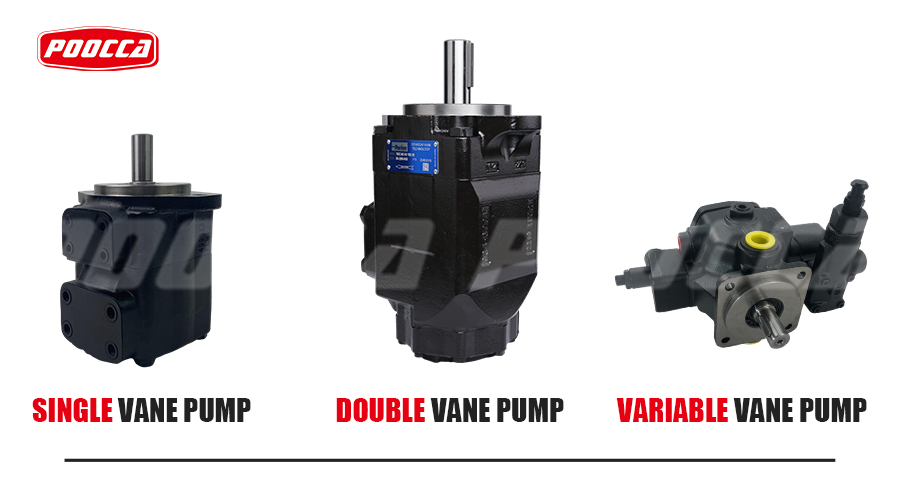In the field of hydraulic engineering, understanding the nuances of hydraulic vane pumps is key to realizing their potential. Hydraulic vane pumps are known for their efficiency, versatility and diverse applications. In this article, we’ll take an in-depth look at the three main types of vane pumps and discuss their construction, benefits, maintenance, and practical applications.
1. Hydraulic vane pump type:
Vane pumps are generally divided into three main types: unbalanced vane pumps, balanced vane pumps and variable displacement vane pumps.
A. Unbalanced vane pump:
Unbalanced vane pumps, also known as fixed-displacement vane pumps, are characterized by asymmetric vanes that produce uneven pressure distribution within the system. These pumps are simpler in design, cost-effective and reliable for low-pressure applications.
B. Balanced vane pump:
In contrast, balanced vane pumps have symmetrically arranged vanes that ensure even pressure distribution. Their balanced design allows for greater efficiency and performance, making them suitable for a wider range of applications, including those requiring higher pressures.
C. Variable vane pump:
Variable vane pumps are the most versatile of the three types. Their unique feature is the ability to regulate displacement, thereby controlling flow and pressure. These pumps are highly efficient and can be used in systems where load or demand changes are common.
2. Vane pump efficiency and structure:
Vane pump efficiency is a key consideration in hydraulic applications. The structure of a vane pump includes a rotor mounted eccentrically in a cam ring and vanes that extend outward under the action of centrifugal force. This design results in chambers of varying volumes, allowing the pump to operate efficiently.
3. Vane pump application:
Vane pumps are widely used in various hydraulic systems, including but not limited to:
Automotive Industry: Vane pumps are commonly used in power steering and hydraulic braking systems due to their reliability and efficiency.
Material handling equipment: They are an integral part of forklifts and conveyors, ensuring smooth, precise hydraulic operation.
Industrial Machinery: Vane pumps are used in hydraulic presses, injection molding machines and die casting equipment and can handle high pressures with ease.
Agricultural equipment: Tractors and combine harvesters rely on vane pumps to power their hydraulic systems, increasing field productivity.
Aerospace: Vane pumps are used in applications such as landing gear telescoping, contributing to aircraft safety and reliability.
4. Advantages and maintenance of vane pump:
One of the main advantages of vane pumps is their simplicity, which makes them easy to maintain. Routine maintenance, including blade replacement and proper lubrication, is critical to ensuring the longevity and reliability of these pumps in a variety of applications.
As technology continues to advance, the field of hydraulic engineering is poised for further innovation, and vane pumps will remain the cornerstone of this dynamic field.
Post time: Oct-13-2023







